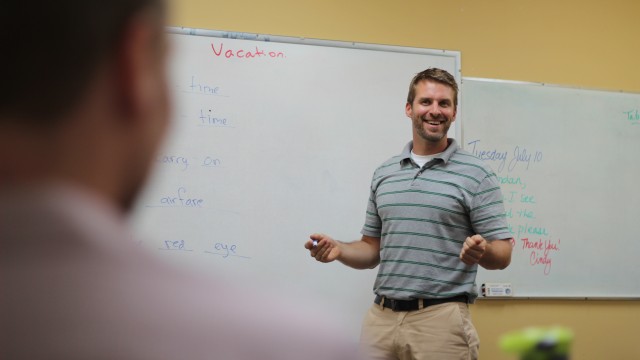100 hours will never be enough to ‘learn how to teach English’. Although TESL Canada certifies teachers after just over one hundred hours, you will never stop learning. I did my TESOL teacher training program in Vancouver and thought I was ready to start working full time right after I graduated. HA! It was a great start that meant I didn’t totally have a breakdown in the first year. I’m glad that the course provided me with a foundation. But I’m still learning new things, 21 years later.
Grammar:
Even with an English Lit degree from UBC and a few European languages under my belt, my TESOL program made it obvious that, at the time, I didn’t know a present participial from the second conditional. Your students usually have rules memorized, but need practice using them and making the right choices. In order to help them and be clear with explanations, you need a pretty good grasp of the fundamentals.
Photocopy shortcuts:
How many times did I miss the double-sided option and end up collating 20 sets of 8 pages on my own, stapling them one by one, and then hole-punching, individually? Don’t let pride add hours to your work load. Ask a veteran for help.
Learning is a partnership: or How to motivate lazy students
You can have the most exciting game, the best YouTube clip or the most amazing role play, but in the end, students have to put in time and effort in order to learn. I lost many sleepless nights feeling I was a ‘bad’ teacher because I’d have a student who didn’t want to learn English. Do your best, work hard, and then remember that part of the responsibility lies with the learner.
What can different levels do:
One school’s high beginners, are another’s intermediate students. One textbook series will have 18 different levels, the next one 3, and yet the contents seem pretty much the same. Basically, you can ignore the ‘labels’ and numbering systems as a way to compare students. You’ll get a sense of the basic differences when you start interacting with them, but the names and numbers on classes, books, activities, etc. rarely match from place to place.
You will plan MUCH more than you will teach:
Some people put this figure at 3:1. Three hours ofpreparation for one hour of teaching. Why did I become an English teacher? Not to spend evenings and weekends cutting flashcards, marking paragraphs, and organizing field trips. It used to take me hours to think up creative activities and plan fluid, meaningful lessons. Not so glamorous, but an essential first stage.
You don’t need to reinvent the wheel:
Someone has already done it better and faster, so don’t start from scratch every time. How people taught before the internet, I’ll never know. Photos, pictures, flashcards, board games, evaluation rubrics, lesson plans, etc. the list is endless. A good teacher is resourceful. Work smarter, not harder.
How to ‘simplify’ language:
Whether you’re teaching English in Canada or overseas, a good TESOL training program can help you practise adjusting your language, an essential skill. As native speakers, we’re not used to ‘filtering’ or ‘adapting’ our language when we talk. We don’t realise that “Ok, so why don’t we take a look at the answers from our last activity” is a nightmare for students who have to translate word for word. We could just say, “Please take out page seven.” Beginners don’t know what “discuss” means, but they can “talk about” something.
That it gets easier:
When I started teaching, I had to plan every set of instructions, each segment of each class. I spent heaps of time looking for practise activities and grammar explanations. I didn’t feel comfortable just walking into any class and ‘winging it.’ I promise, the more you do it, the easier it gets. And while you will never know everything about English and you can always grow as a professional, the little things become less traumatic and the moments of inspiration, fascination, and enjoyment increase.

